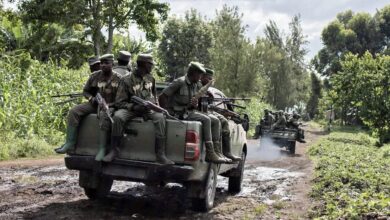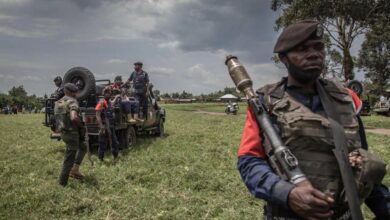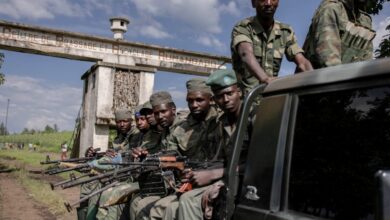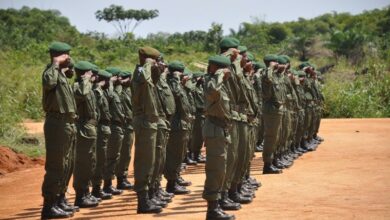Congolese Soldier Guns Down 13 Civilians, Mainly Children
A distraught Congolese soldier shot dead at least 13 civilians, most of them children, in a village in the northeast of the conflict-plagued country, military and local sources said Sunday.
The naval serviceman couldn’t bear the fact that his child had been buried in his absence, the day before he arrived in the village of Nyakova, according to testimonies gathered by AFP.
Nyakova is a fishing village in the Djugu territory, about 65 kilometers (40 miles) east of Bunia, the capital of Ituri province, one of eastern DR Congo’s violence hotspots, where deadly attacks are common.
The angry soldier “fired on civilians” gathered on Saturday evening “at the place of mourning, on the grounds that… his child had died and been buried without him being informed,” army spokesman Lieutenant Jules Ngongo told AFP.
The soldier had been with his unit in Gobu, 55 kilometers away.
The death toll is “13, including his two children. The soldier is on the run and is wanted” for trial, he added.
The Kivu Security Tracker (KST), a respected conflict monitor, confirmed the circumstances of the tragedy and said the death toll included “10 children and two women who were said to have taken part in the funeral of his son, who died in his absence.”
On Saturday 22nd, a #FARDC soldier returning from #Gobu killed 13 civilians, including 10 children and 2 women, who would have participated in the burial of his deceased son while he was deployed. The incident occurred in the village of #Tchomia (#Djugu territory, #Ituri). #DRC pic.twitter.com/dnDGFPHVvv
— Baromètre sécuritaire du Kivu (@KivuSecurity) July 24, 2023
Bahati Franck, leader of a local youth association, told AFP that 13 people had been killed at point-blank range “including nine children, who died on the spot.”
Another local official said that a fourteenth victim died on Sunday morning as a result of his injuries.
Armed groups have plagued much of eastern DRC for decades, a legacy of regional wars that flared in the 1990s and 2000s.











